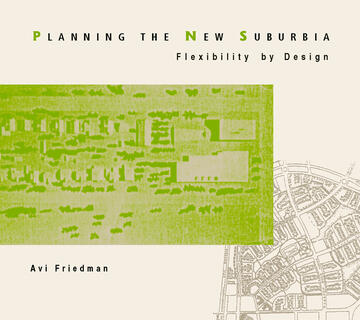
Planning the New Suburbia
Flexibility by Design
Description
The suburbs house two-thirds of North America’s population and are the subject of much debate and criticism. Planning the New Suburbia explores this phenomenon and proposes ways to respond to the challenge of creating affordable, adaptable, and environmentally sustainable neighbourhoods. Avi Friedman surveys the evolution of urban planning and the the development of North American suburbs. He suggests new methods of design and regulation that would enable urban planners to conceive and inhabitants to adapt suburban communities and homes to their evolving needs, including changing family sizes, aging populations, or new working conditions. Rather than dismissing a suburb as an unattractive, impersonal sprawl, Friedman shows how they can be modified into an affordable, sustainable, and adaptable community.